The people in Hanoi’s Old Quarter for more than 30 years are familiar with the silhouette of a gray-haired old women carefully sewing ao dai using old sewing machines. Le Thi Quyen, born in 1940, is the last woman to sew ao dai this way in Hanoi.
Secret of a famous brand
Quyen is one of the first people to bring the making of ao dai from Trach Xa, Thanh Oai district, Hanoi, to sew on Luong Van Can street. She and her husband opened Vinh Trach tailor shop in the early 1990s.
For more than 30 years, even though many modern ao dai tailor shops have popped up all over on the streets of Hanoi, Quyen's small simple shop is still open regularly from 8am until late at night.
The traditional costumes of Vinh Trach tailor shop have been attracting many local customers as well as foreigners. Quyen has received many ao dai orders to be sent to countries such as Japan, Korea, England and France.
The secret to keep customers coming back to her shop is that the traditional dress must be made entirely by hand, from measuring, cutting to sewing.
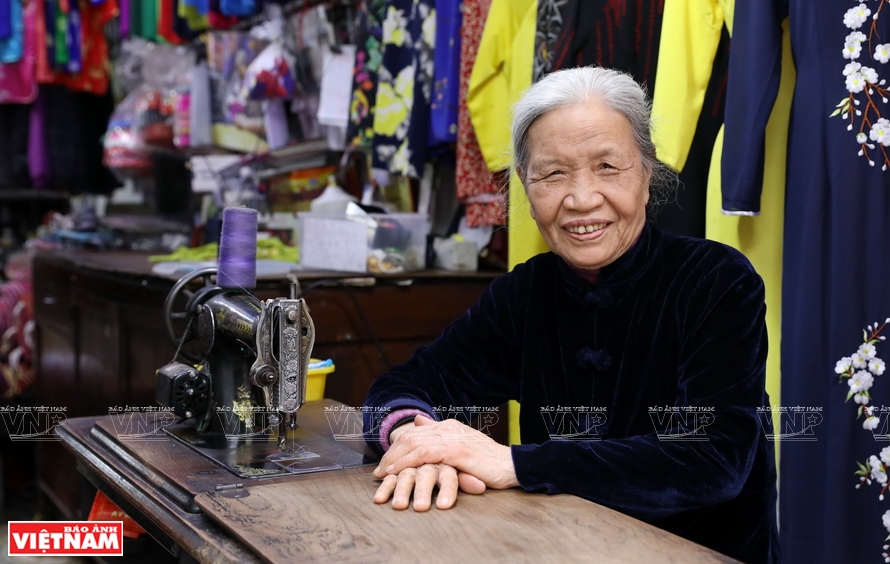
Le Thi Quyen, born in 1940, is the last woman to sew ao dai using old sewing machines in Hanoi.
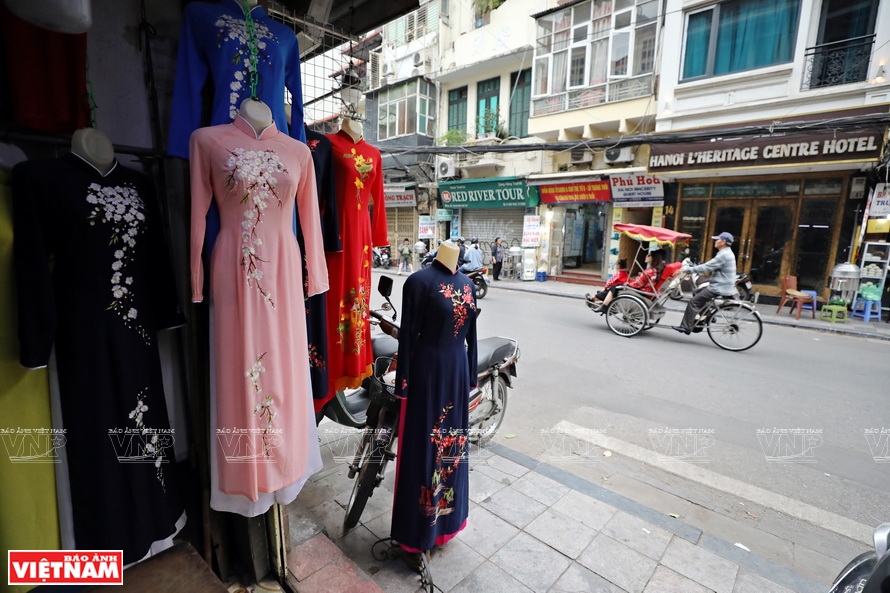 Quyen's small simple shop is still open regularly from 8am until late at night.
Quyen's small simple shop is still open regularly from 8am until late at night.
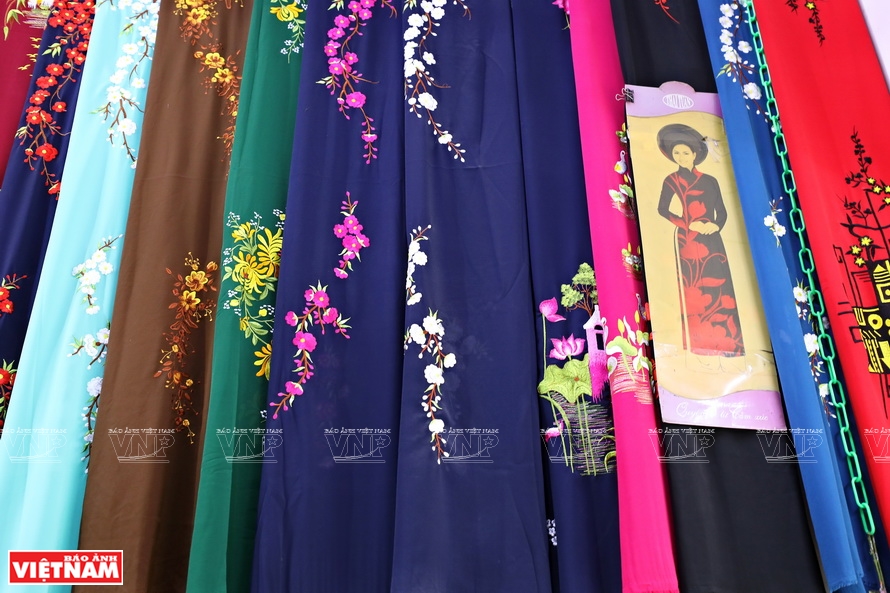
Vinh Trach tailor shop's ao dai is made of different kinds of fabric.
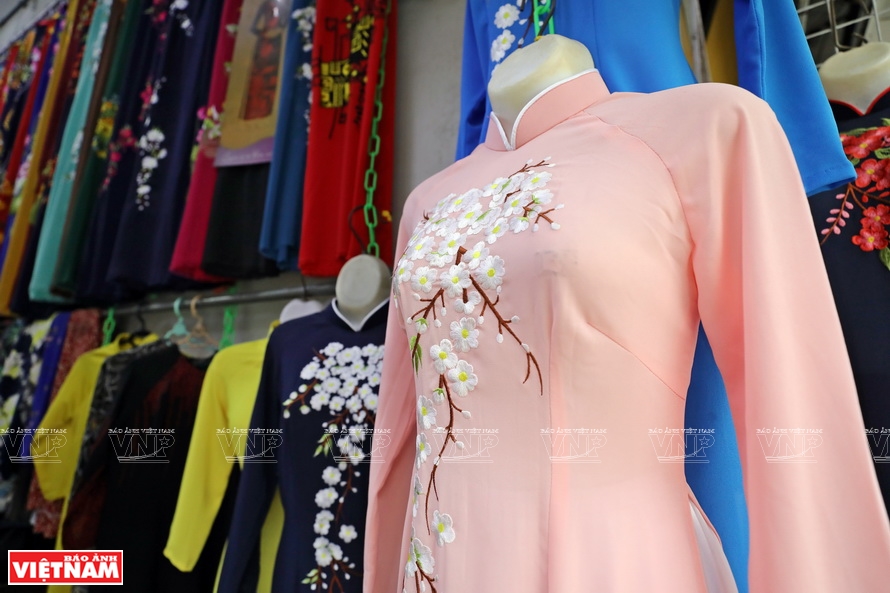 Vinh Trach tailor shop makes ao dai for all ages.
Vinh Trach tailor shop makes ao dai for all ages.
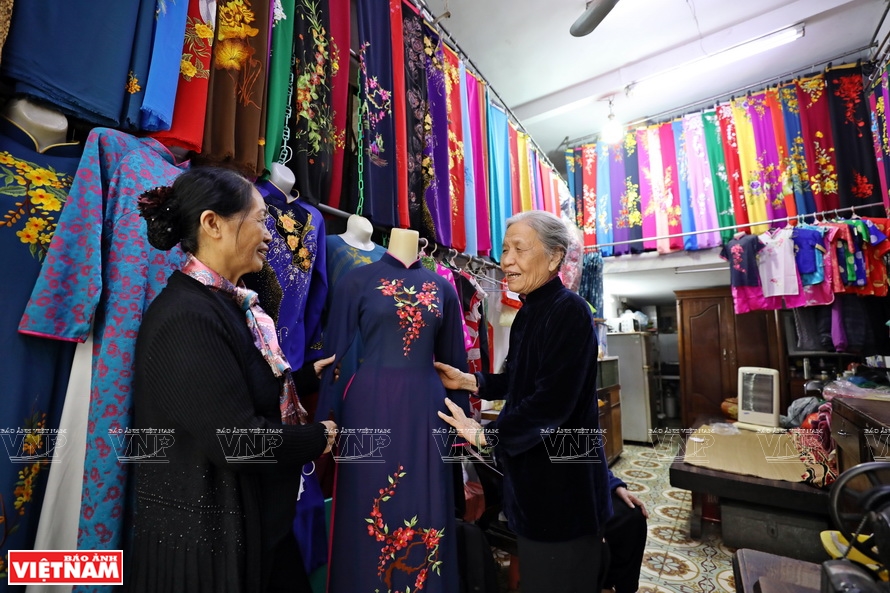 Le Thi Quyen can sew anything from ancient high-neck, long-panel dresses to modern styles of ao dai.
Le Thi Quyen can sew anything from ancient high-neck, long-panel dresses to modern styles of ao dai.
|
According to Quyen, sewing an ao dai by hand makes the costume more soulful. That is also the unique technique of the craft village, Trach Xa.
As Quyen has witnessed the changes in styles and designs of the ao dai for years, she can also sew anything from ancient high-neck, long-panel dresses to modern styles of ao dai. However, most customers returning to her shop request the traditional style.
Keeping the fire of the family's craft alive
Despite being nearly 80 years old, Quyen is still very meticulous in the way she cuts and stitches each ao dai.
“Having worked for many years, the sewing profession is in my blood. As long as my eyes are clear and my hands are flexible, I will continue sewing”, Quyen said when asked about how she still made ao dai by hand at such an old age.
Quyen is the fourth generation in the family to sew ao dai in Trach Xa village. After the war, her family moved to Hanoi and continued the traditional work.
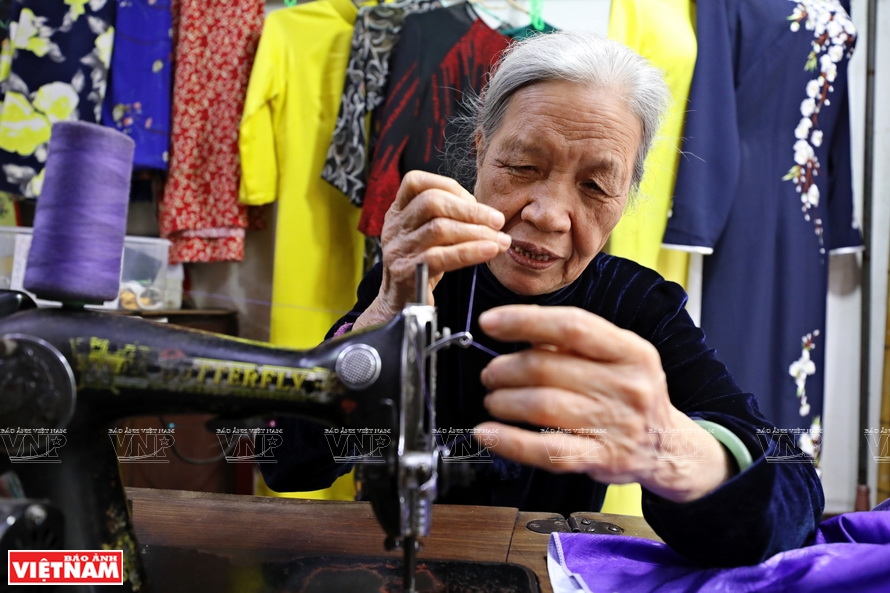
Quyen threads the needle without wearing glasses.
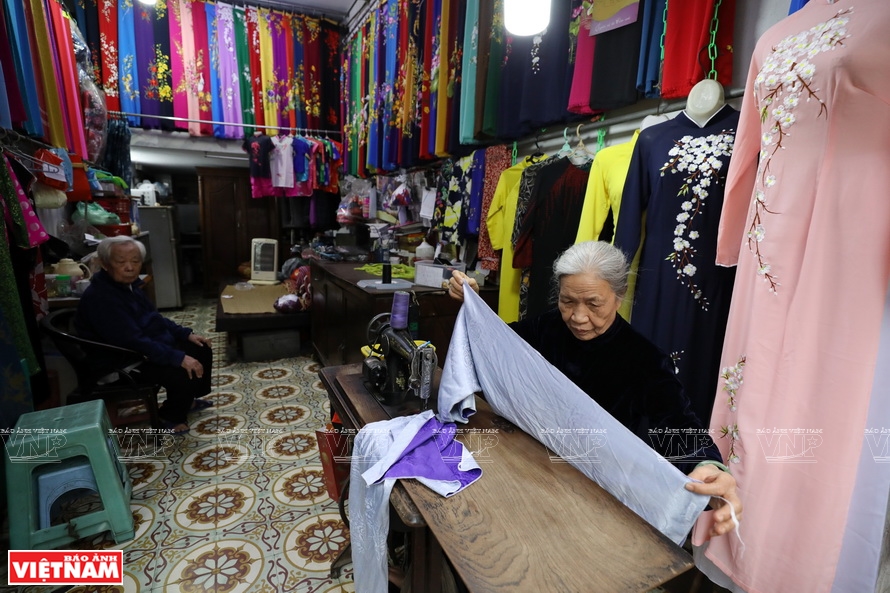 From the age of 12, Quyen followed her father around the streets of Hanoi to measure customers.
From the age of 12, Quyen followed her father around the streets of Hanoi to measure customers.
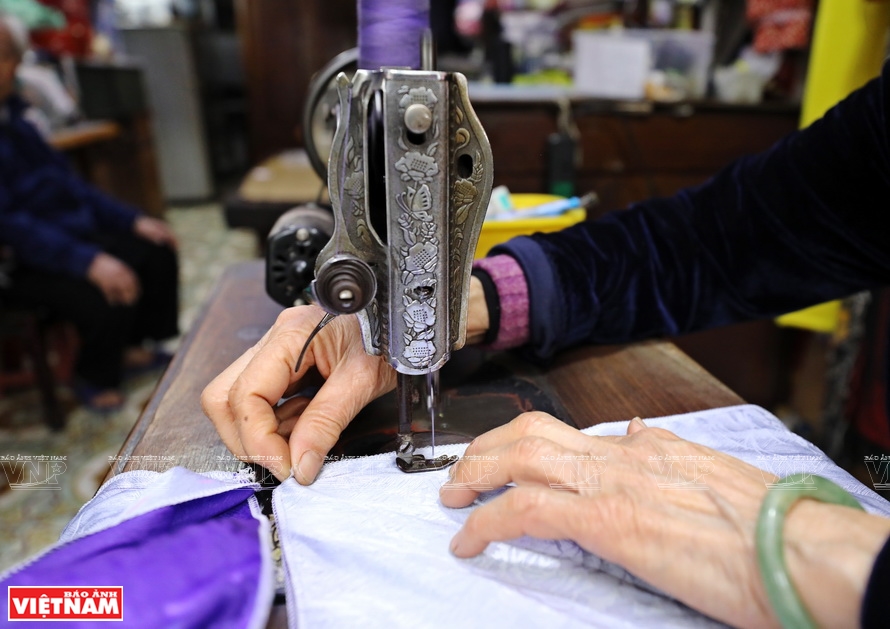
Despite her old age, Quyen with her keen eyes and skillful hands still works every day
for the most demanding customers in Hanoi.
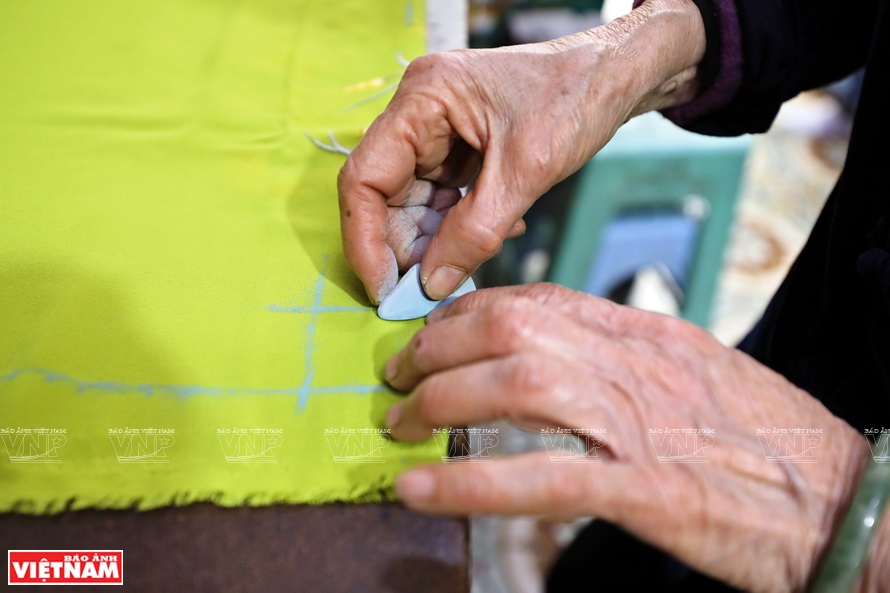 Except for the oversew, all other steps of making ao dai are done by Le Thi Quyen,
Except for the oversew, all other steps of making ao dai are done by Le Thi Quyen,
from measuring and cutting fabric to sewing clothes.
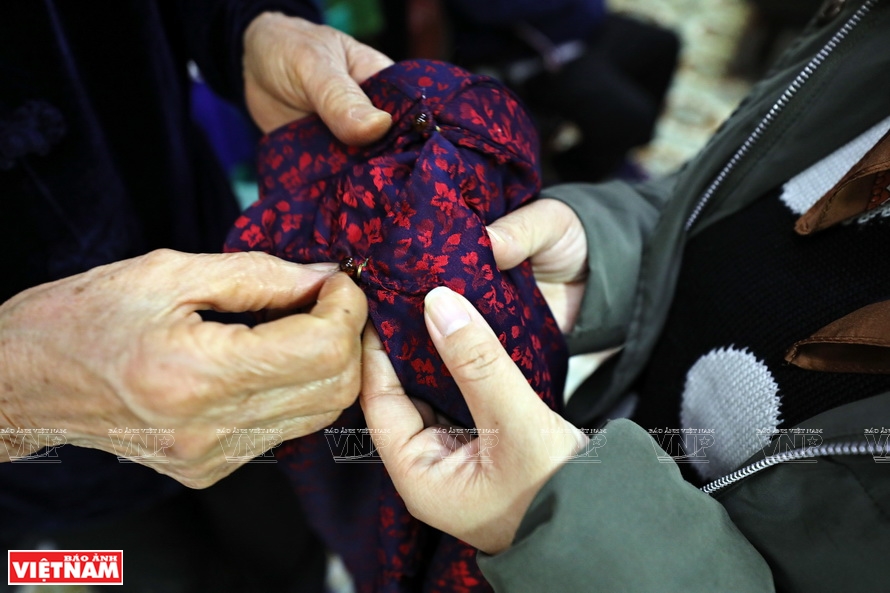 The secret to keep customers coming back to her shop is that the traditional dress must be made entirely by hand, from measuring, cutting to sewing.
The secret to keep customers coming back to her shop is that the traditional dress must be made entirely by hand, from measuring, cutting to sewing.
 Le Thi Quyen believes that the most beautiful ao dai are those which every single stitch is done with care.
Le Thi Quyen believes that the most beautiful ao dai are those which every single stitch is done with care.
|
From the age of 12, Quyen followed her father around the streets of Hanoi to measure customers. Because she was gifted, Quyen soon was able to sew a complete set of ao dai by herself.
Later, she officially succeeded her father. After 70 years, Quyen has also witnessed many changes in the sewing profession as well as the traditional culture of wearing an ao dai .
For her, ao dai is not simply an outfit but is a sacred value and a tradition of the family. In the heart of the Old Quater, her tailor shop is the most typical example of the traditional craft’s inheritance and development
Story: Thao Vy Photos: Cong Dat Translated by Hong Hanh